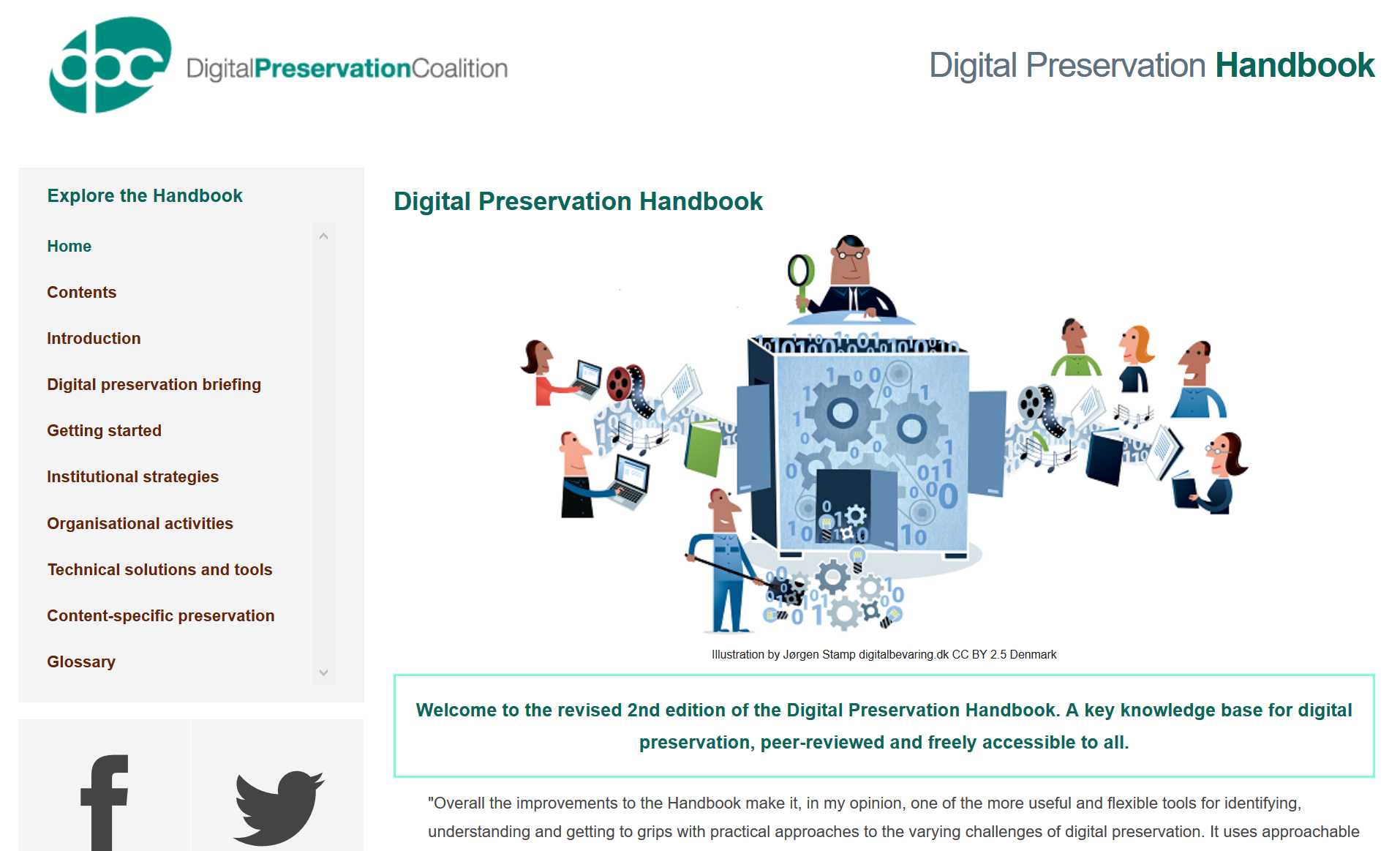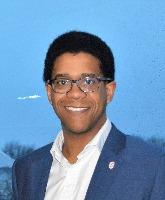Blog
Unless otherwise stated, content is shared under CC-BY-NC Licence
Building Connections Through Data Conversations At Lancaster University
Josh Sendall is Research Data Manager at Lancaster University Library (the Library)
When you’re enabling Research Data Management (RDM) best practice it’s easy to get caught up in the systems and services. To focus on processes - on planning, storing, transferring, archiving and sharing digital objects. And yet, behind every Data Management Plan, behind every dataset, there’s a person making a contribution to scholarship.
At Lancaster University every few months we convene 'Data Conversations.' These are two-hour events where current Research Data Management issues are discussed. We start with an informal free lunch for all attendees, followed by a mixture of short talks and panel discussions. Bringing our researcher community together in this relaxed and friendly environment continues to provide a dynamic and innovative platform. What's more, it's a chance to meet researchers from different disciplines and at different career stages — what's not to like!
EU Publications Office archiving and long-term preservation team celebrate 1st birthday
Els Breedstraet is teamleader for archives and long-term preservation at the Publications Office of the European Union
Dear diary
16th of April – Today, the archives and long-term preservation team at the Publications Office of the EU (OP) celebrates its first birthday. Exactly a year ago, OP was reorganised and for the first time the four services linked to archiving were grouped together into one team. I got entrusted the exiting, but also very challenging, task of heading the team. Some of my colleagues are working already a long time in the field, others are completely new to the trade.
Digital Preservation to Support Large-Scale Digital Repatriation Initiative of Qatar National Library
Dr. Arif Shaon is Senior Digital Curation Specialist at Qatar National Library
Qatar National Library
On 16 April 2018, we were officially inaugurated as the Qatar National Library by His Highness Sheikh Tamim Bin Hamad Al Thani, the Emir of Qatar, and became one of the youngest national libraries in the world. Despite being a young library, we have taken confident steps towards supporting Qatar’s transition from a reliance on natural resources to a diverse, sustainable knowledge-based economy. Our initiative for digitally repatriating the nation’s cultural heritage, which began long before our grand opening in April, especially in the form of the Qatar Digital Library (QDL)[1], is a significant contribution to the Library’s progress.
Archiving Final Draft: A potential digital gold mine of film and TV scripts
Emily Walker is a CHASE-funded Doctoral Researcher at the University of East Anglia currently specialising in television comedy. Her thesis is investigating the representation of religion in four British religious sitcoms – All in Good Faith, The Vicar of Dibley, Father Ted, and Rev – to establish ‘religious sitcoms’ as a sitcom sub-genre. She is also undertaking a placement as Curatorial Assistant for the British Archive for Contemporary Writing’s TV Comedy Collection (University of East Anglia).
Archiving Final Draft: A potential digital gold mine of film and TV scripts
But can we access the creative process behind them?
Within the screenwriting industry, Final Draft is universally acknowledged as the industry standard scriptwriting software to use if you want to be taken seriously as a professional. The Final Draft website proudly boasts that companies from the BBC to Netflix to Walt Disney use the software for their productions, and includes quotes from users such as Guillermo Del Toro, JJ Abrams, and Sofia Coppola praising the ease of use and technical ability. Del Toro even humorously suggests that Final Draft has been such a ‘wise, patient and loyal writing partner’ that he would happily elope with the software.
The package – which currently costs around £200 – can write Film, TV, or theatre scripts, can be customised to suit any company scriptwriting format, allows for cross-computer collaboration, works on almost any device, and has regular updates introducing new interactive features like a beat board and alternative dialogue (which I’ll return to later). Overall, the Final Draft software is used in over 95% of film and television productions.
Comparative analysis of uncompressed AVI and FFV1 video
Graham Purnell is a former photographer, web content and social media professional who began working as a Digital Preservation Assistant with the National Library of Scotland in early January 2019
The purpose of these tests: to use FFMPEG to transcode an uncompressed AVI file to FFV1, with identical ‘pixel-for-pixel’ output to the original source video, and to verify the results.
I’ve read a lot of information on the internet about the benefits of using FFV1/MKV as an archive video format/wrapper, but little empirical evidence about why it is suitable. It doesn’t help that, in the minds of many people, the word ‘compression’ is synonymous with ‘lossy’ (“if file sizes are smaller, surely some data must be missing.”) Archivists and digital preservation practitioners avoid much of the technical video information when writing, and video specialists address the subject in terms beyond the scope of many archivists. Thankfully, I have some previous video production experience and I hope I can help make some sense of it all.
Variation in national digital preservation policies
Alexander Roberts is Digital Humanities Manager/Research Data Manager at Swansea University and attended iPRES2018 with support from the DPC's Leadership Programme which is generously funded by DPC Supporters
Denmark and the Danish Archives Act 1992, 1996, 2000 and 2007
With preparations for iPres2019 in Amsterdam firmly underway and the deadline for submitting contributions having just passed, I have begun reflecting on some of the themes that resonated with me from last year’s amazing meeting at iPres2018. This was my first taste of the iPres experience, and it didn’t disappoint! My particular interests lie in computer science, IT areas including a focus on the performing arts (I’m a keen musician and composer). I found all of these areas well represented with keen and informed speakers elucidating on the finer points of applying arcane techniques and wizardly approaches to solving all sorts of digital preservation conundrums.
Signed, Sealed, Delivered - Working on the DP Handbook 3.0
After the launch of the 2nd edition, one of our key goals for the Digital Preservation Handbook was for it be a dynamic resource. It would be updated regularly and keep pace with developments in the community. With this in mind I was appointed ‘Managing Editor’ af ter Neil Beagrie completed his sterling work developing the 2nd Edition.
ter Neil Beagrie completed his sterling work developing the 2nd Edition.
PASIG 2019, 12-14 Feb, El Colegio de México, Mexico City (part 1)
Rachel Tropea is Senior Research Archivist at the University of Melbourne and and attended PASIG2019 with support from the DPC's Leadership Programme which is generously funded by DPC Supporters

Photo sourced from El Colegio de México, A.C. Available at https://www.colmex.mx/assets/slider/slide-folleto_original_16.jpg?1508794010 [accessed 9 March 2019].
This is my first of two blog posts about PASIG2019 held at El Colegio de México (pictured above) in Mexico City. Here I focus on the history and organisation of Preservation and Archiving Special Interest Group Meeting (PASIG), and in my next post I delve into the content of some of the presentations. With the list of conferences growing seemingly exponentially, PASIG is a stand out for people working in digital preservation and archives.
The Application of Preservation Planning Templates to a Personal Digital Collection – Reflections on the Process
Introduction
The PAWDOC collection was initiated in 1981 to support research into new office systems at the National Computing Centre in Manchester. The author continued to use the collection to manage all his documents throughout his subsequent IT career. The collection’s index contains six fields (Ref No, Title, Movement Status, Publication Date, Date Last Accessed, and Creation Date). Each of the 17,000 Index entries related to one or more of some 29,000 electronic files of a wide variety of file types stored in a Document Management System. The collection provides a unique snapshot of the development of computer use in industry, and of the impact on the day to day information load on professionals across the period of the introduction of the internet; and therefore seems worth trying to preserve.
It's all about the money
It was around this time four years ago that I (and other members of the 4C Project) were breathing huge sighs of relief. The Project had just been awarded an ‘Excellent’ rating by the European Commission Review Panel, but perhaps more significantly the Curation Costs Exchange (CCEx) had been born!


















































































































































